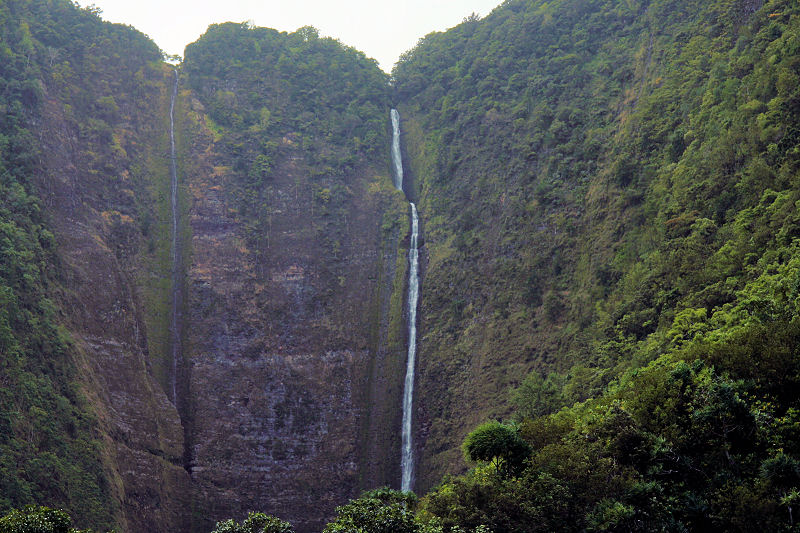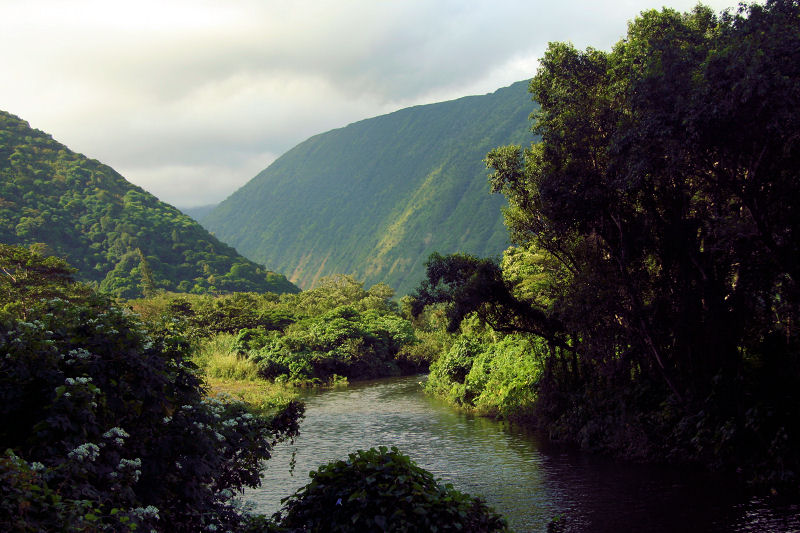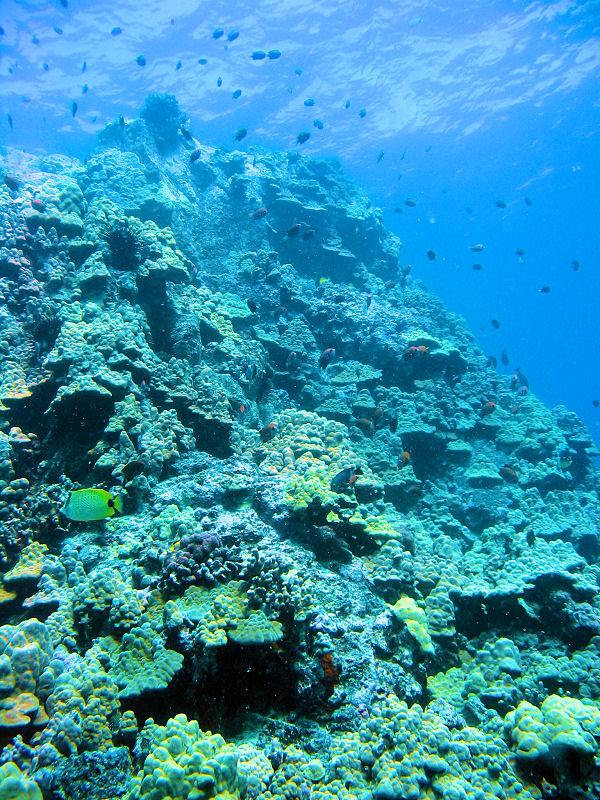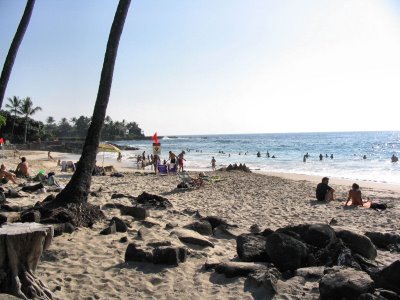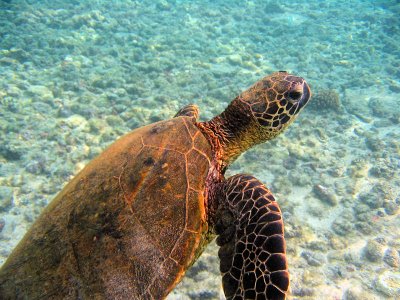Drive to the Mauna Kea Summit
Although it is in plain sight, reaching is summit is not an easy task. The easiest way is to take the guided summit tour. Transportation is conveniently provided along with insightful narrative and telescopes for gazing through the clear cold sky to the heavens above.
If you want to drive there on your own, more than likely you are renting a car and that is a disqualifier. You will be able to reach the Onizuka Visitor’s Center at 9,000 feet, but no further. That is because from here the road is a windy, rough, 4x4-only dirt road, and regular rental vehicles are prohibited (even if you rent an SUV). I mention regular rental vehicles - that is because there is one company on the island that rents *special* vehicles for you to traverse the more rugged portions of the island.
Harper Truck Rentals offers 4WD vehicles that can take you to the top of Mauna Kea, as well as into the Waipio Vallley, and other remote 4x4-only destinations on the island. On this particular occasion, we rented a Toyota 4Runner from Harper and drove the saddle road from Hilo. We turned north at the Mauna Kea Access Road (near the 28-mile marker) and drove 6 miles to the Onizuka Visitor's Center. You can reach the visitor's center in any vehicle, however you cannot continue to the summit from here without 4WD. It is a good idea to rest at the visitor's center for about 30 minutes to help acclimate yourself to this high altitude.
We stopped to tour the visitor's center and then continued on up the windy, loose-gravel road to the summit. The month was December and there was fresh snow on the ground, so we drove slowly and with caution. The narrow road winds its way to the top and we could see expansive views of the island below as well as snow and ice that had accumulated on the cinder cone. We finally reached the end of the road. Up here, some of the world's most powerful and important telescopes are operated by many international organizations. Canted off to the side is the tall cinder cone marking the actual Pu'u Wekiu summit of Mauna Kea. Eager to conquer this point, we departed the vehicle and trudged across the ice and snow towards the peak. If you come this far, make sure you dress warmly! Most visitors to Hawaii do not pack for 30-degree, icy weather, but luckily we were dressed for the occasion - jackets, warm layers, and gloves.
As we ascended this snow-capped peak, we hastened our pace in excitement, and forgetting about the above-10,000 foot altitude, out breathing became a little bit too heavy. Consequently, by the time we reached the peak, we felt a shortness of breath and some light-headedness. Any time a human is above 10,000 feet, there is cause for concern as the oxygen content here is significantly lower than at sea level. With less oxygen being inhaled, opportunities for hypoxia and even edema do exist. I quickly recognized these were all symptoms of hypoxia and that I needed to calm down and sit down - or else... So we took a lot of photos (which I subsequently lost and cannot find to this day) and returned to the truck to sit for a moment as I gathered my breath. Of course, we scooped up snow balls along the way and enjoyed the very unusual Hawaii scene.
There is one other way to reach the summit - although it is a physical challenge. That is to hike from the visitor's center to the summit. That means ascending more than four thousand feet in elevation. The hike is a demanding 12 miles, round trip, and will take most or all of the day to accomplish. Details and maps are available at the visitor's center. Someday I plan to do this hike - along with the very rigorous Mauna Loa summit hike. In the meantime, I need to search my house to find those missing photos of the Mauna Kea summit.
Descending back down on the windy gravel road is a challenge. The grade is steep and the road narrow. This is where the tough 4x4 sure comes in handy. Make sure you do not ride the brakes going down or you could end up with a bad situation. If you can, shift to a lower gear, or engage a downhill assist mode (Toyota truck feature). Fog can swoop in at any time on this road, making it even more dangerous than it already is.
Labels: Big Island, hiking, volcano

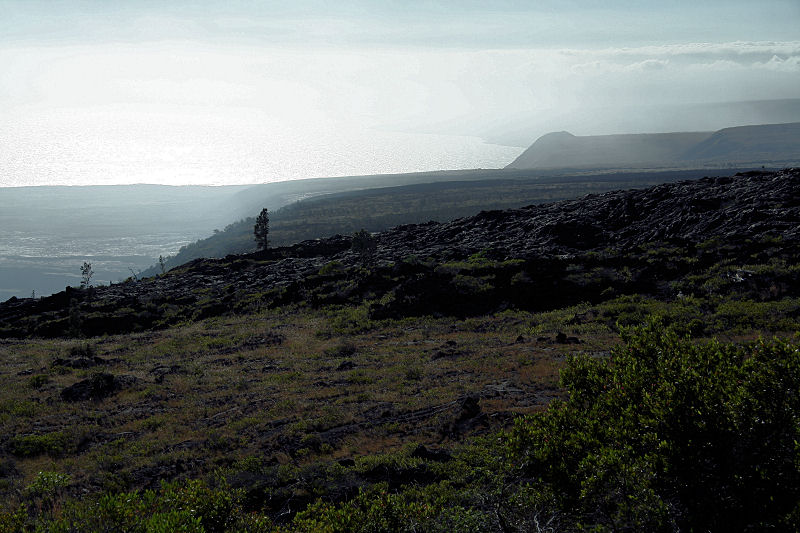
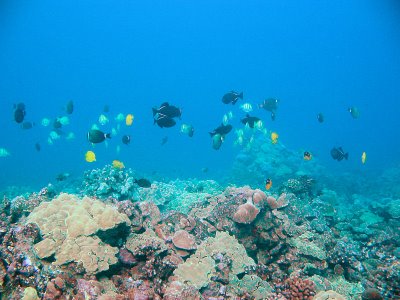
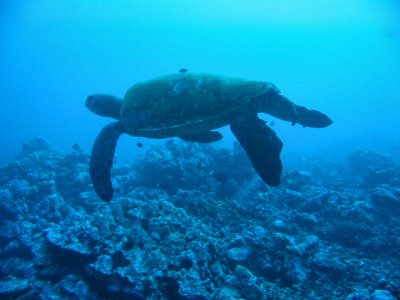 I have seen more than thirty turtles on a dive here at Leleiwi. I enjoy observing their impressive presence underwater; some of the adult turtles here are without a doubt older than I am. I see many of the turtles resting gently on the reef, in caves and holes between the coral, and in sandy clearings underwater. Some of the younger adolescent turtles are happily swimming about, curious of me as I am of them.
I have seen more than thirty turtles on a dive here at Leleiwi. I enjoy observing their impressive presence underwater; some of the adult turtles here are without a doubt older than I am. I see many of the turtles resting gently on the reef, in caves and holes between the coral, and in sandy clearings underwater. Some of the younger adolescent turtles are happily swimming about, curious of me as I am of them.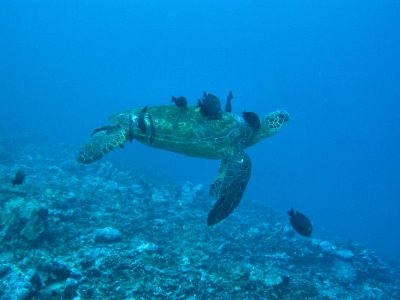 If you are lucky you will see a turtle cleaning station where fish help the green sea turtle by cleaning his shell. This turtle happened to pose ever so patiently for me to steady my camera and take the shot!
If you are lucky you will see a turtle cleaning station where fish help the green sea turtle by cleaning his shell. This turtle happened to pose ever so patiently for me to steady my camera and take the shot!